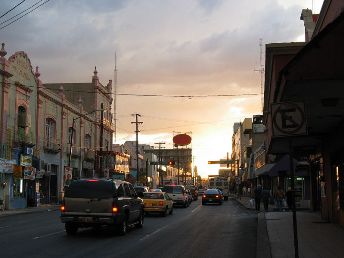by Bernd Debusmann, Jr.
Mexican drug trafficking organizations make billions each year trafficking illegal drugs into the United States, profiting enormously from the prohibitionist drug policies of the US government. Since Mexican president Felipe Calderon took office in December 2006 and called the armed forces into the fight against the so-called cartels, prohibition-related violence has killed over 16,000 people, with a death toll of over 7,000 so far in 2009. The increasing militarization of the drug war and the arrest of several high-profile drug traffickers have failed to stem the flow of drugs -- or the violence -- whatsoever. The Merida initiative, which provides $1.4 billion over three years for the US to assist the Mexican government with training, equipment and intelligence, has so far failed to make a difference. Here are a few of the latest developments in Mexico's drug war:

The Mexican government announced that it plans to deploy an additional 2,000 federal police to Ciudad Juárez. This deployment is part of a recently announced strategy in which the federal police will take over many of the patrolling duties currently performed by the 6,000 soldiers in and around the city. The police will also take charge of Ciudad Juárez's emergency response center.
Saturday, January 16
A Mexican crime reporter was kidnapped and murdered in Sinaloa. The body of radio journalist Jose Luis Romero was found near the town of Los Mochis, wrapped in plastic. Romero had been missing since December 30, when he was kidnapped from a restaurant. Police officials stated that his hands and a leg had been broken before he was executed. Romero is the third journalist killed in the last few weeks, and at least the 24th killed since 2006.
Sunday, January 17
In Culiacan, Sinaloa, a severed head with a flower tucked behind the earwas left in front of the tomb of Arturo Beltran-Leyva, who was boss of the Beltran-Leyva Organization (BLO) until he was killed in a raid by Mexican naval special forces on December 16. Sinaloan prosecutors said the decapitated body was found in a bag atop a nearby grave which belongs to another drug trafficker.
Additionally, in the port city of Manzanillo, authorities confiscated more than 3 tons of pseudoephedrine, which is used in the production of methamphetamine.
The Mexican government announced that an additional 860 soldiers are to be deployed to Tijuana, where they will assist local law enforcement in setting up roadblocks and creating anonymous complaint centers. These reinforcements are being sent into the city just a week after the arrest of Teodoro "El Teo" Garcia Simental, a violent cartel boss who led a breakaway faction of the Tijuana Cartel which allied itself with the Sinaloa Cartel. Many are concerned that his arrest could lead to an increase in violence in the city as rival drug traffickers fight to fill the void in leadership.
Near Morelia, the capital of Michoacan, authorities found the bodies of five men who were apparently killed by vigilantes. Four of the men were strangled or asphyxiated with tape, and the fifth was shot. Notes were found attached to each of the bodies, all bearing the same message and apparently in the same handwriting. The signs read "This is what is going to happen to all the rats who rob houses, cars, pedestrians. Let the rats be advised." Rat is a common slang term for thieves. Many petty criminals have been killed in recent years by vigilante groups thought to be operating on behalf of drug traffickers or the police, or both.
Monday, January 18
In Guasave, Sinaloa, a group of heavily armed gunmen forced their way onto an ambulance and executed a woman. Maria Arminda Perez Quintera was being driven to a Culiacan hospital after being wounded in an assassination attempt the same evening. The gunmen forced the driver and a paramedic to get out of the ambulance before they shot Quintera dead and fled the scene.
In Mazatlan, six men were killed in a gun battle between two groups of gunmen. Four of the men were found dead at the scene of the firefight, and the other two died of their wounds while being driven to the hospital.
Tuesday, January 19
In Tijuana, authorities arrested three people who reportedly worked for the faction of the Tijuana Cartel which until last week was under the leadership of Teodoro "El Teo" Garcia Simental. The two men and a woman were arrested as they prepared to dissolve a body in chemicals. Police raided the house after receiving a tip that drugs were being stored there. Upon entering the house, they found a body in a bathtub, as well as 258 pounds of marijuana, three rifles, a pistol and two bulletproof vests.
Wednesday, January 20
In Durango, a prison brawl left 23 men dead. Although the reason for the fight is still unclear, Mexican prison violence is often associated with drug trafficking organizations.
Body Count for the Week: 101
Body Count for the Year: 440
Body Count for 2009: 7,724
Body Count since President Calderon took office (December 2006): 16,645
Read the last Mexico Drug War Update here.
This work by StoptheDrugWar.org is licensed under Creative Commons Attribution-ShareAlike 4.0 International
Add new comment